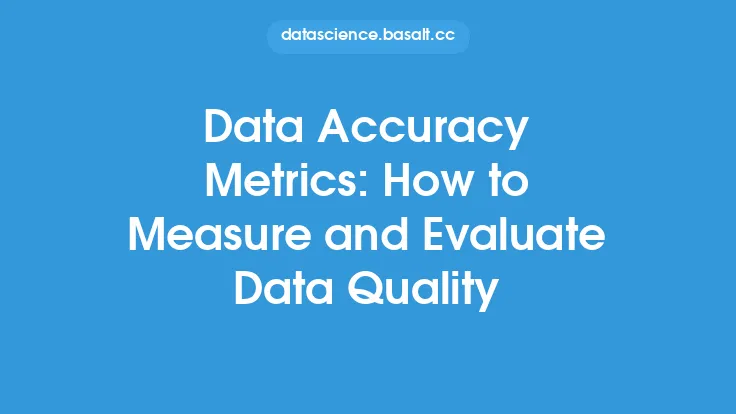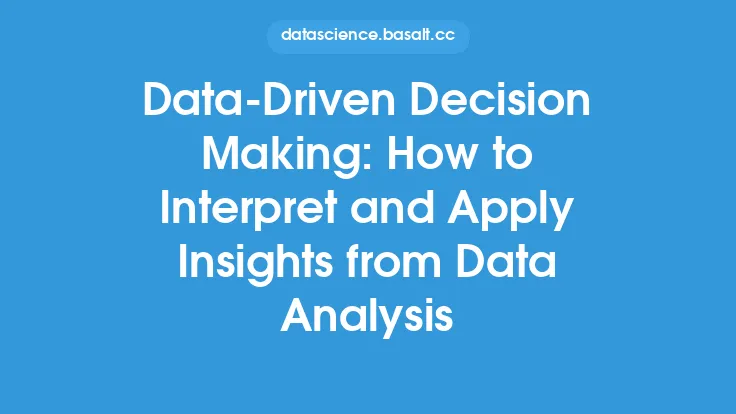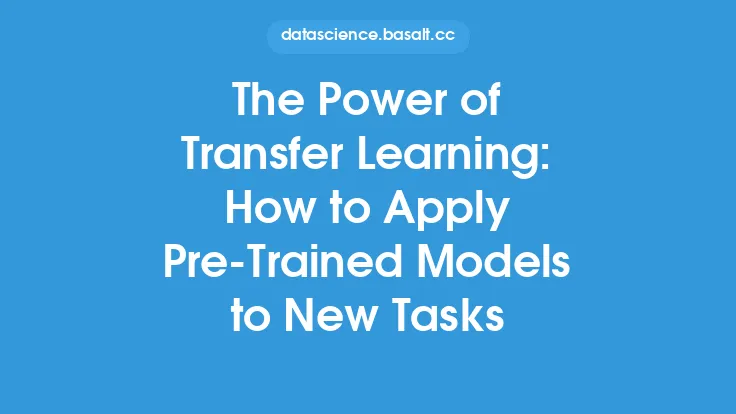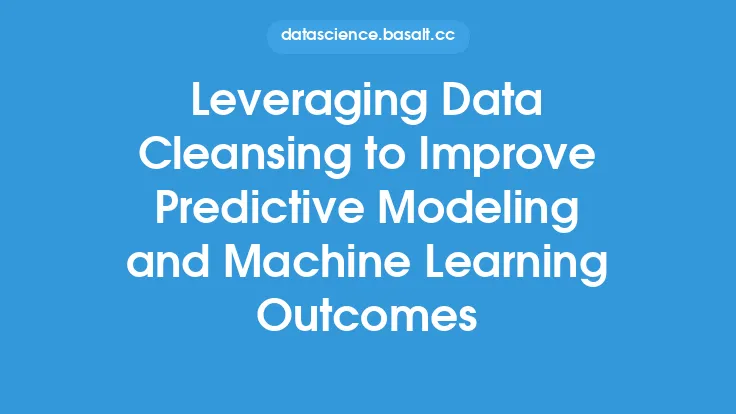Evaluating and comparing predictive models is a crucial step in the data mining process, as it enables data scientists and analysts to select the most accurate and reliable model for a given problem. With the increasing availability of data and the advancement of predictive modeling techniques, it is essential to have a comprehensive understanding of how to evaluate and compare different models. In this article, we will delve into the key aspects of evaluating and comparing predictive models, including the metrics used, techniques for comparison, and best practices for model selection.
Introduction to Evaluation Metrics
Evaluation metrics are used to measure the performance of a predictive model, and they play a critical role in determining the accuracy and reliability of the model. The choice of evaluation metric depends on the type of problem being addressed, such as classification, regression, or clustering. For classification problems, common evaluation metrics include accuracy, precision, recall, F1-score, and area under the receiver operating characteristic (ROC) curve. For regression problems, metrics such as mean squared error (MSE), mean absolute error (MAE), and coefficient of determination (R-squared) are commonly used. It is essential to understand the strengths and limitations of each metric and to select the most appropriate metric for the problem at hand.
Techniques for Comparing Models
Comparing predictive models involves evaluating their performance on a given dataset and selecting the best model based on the evaluation metrics. There are several techniques for comparing models, including:
- Holdout method: This involves splitting the available data into training and testing sets, training the model on the training set, and evaluating its performance on the testing set.
- Cross-validation: This involves splitting the available data into multiple folds, training the model on one fold, and evaluating its performance on the remaining folds.
- Bootstrapping: This involves creating multiple samples of the available data with replacement and evaluating the model's performance on each sample.
Each technique has its strengths and limitations, and the choice of technique depends on the size and complexity of the dataset, as well as the computational resources available.
Model Selection and Hyperparameter Tuning
Model selection involves choosing the best model from a set of candidate models, while hyperparameter tuning involves adjusting the parameters of a model to optimize its performance. Model selection and hyperparameter tuning are critical steps in the predictive modeling process, as they can significantly impact the accuracy and reliability of the model. There are several techniques for model selection and hyperparameter tuning, including:
- Grid search: This involves exhaustively searching through a predefined set of hyperparameters to find the optimal combination.
- Random search: This involves randomly sampling the hyperparameter space to find the optimal combination.
- Bayesian optimization: This involves using Bayesian methods to search for the optimal hyperparameters.
It is essential to carefully evaluate the performance of each model and to select the model that best balances accuracy and complexity.
Handling Class Imbalance and Missing Data
Class imbalance and missing data are common challenges in predictive modeling, and they can significantly impact the accuracy and reliability of the model. Class imbalance occurs when one class has a significantly larger number of instances than the other classes, while missing data occurs when some of the values in the dataset are missing. There are several techniques for handling class imbalance and missing data, including:
- Oversampling the minority class: This involves creating additional instances of the minority class to balance the dataset.
- Undersampling the majority class: This involves removing instances of the majority class to balance the dataset.
- SMOTE (Synthetic Minority Over-sampling Technique): This involves creating synthetic instances of the minority class to balance the dataset.
- Mean/Median/Mode imputation: This involves replacing missing values with the mean, median, or mode of the available values.
It is essential to carefully evaluate the impact of class imbalance and missing data on the model's performance and to select the most appropriate technique for handling these challenges.
Model Interpretability and Explainability
Model interpretability and explainability are critical aspects of predictive modeling, as they enable data scientists and analysts to understand how the model is making predictions and to identify potential biases and errors. There are several techniques for model interpretability and explainability, including:
- Feature importance: This involves evaluating the importance of each feature in the model.
- Partial dependence plots: This involves plotting the relationship between a specific feature and the predicted outcome.
- SHAP (SHapley Additive exPlanations) values: This involves assigning a value to each feature for a specific prediction, indicating its contribution to the outcome.
It is essential to carefully evaluate the model's interpretability and explainability and to select the most appropriate technique for understanding how the model is making predictions.
Best Practices for Evaluating and Comparing Models
Evaluating and comparing predictive models requires careful consideration of several factors, including the choice of evaluation metric, the technique for comparing models, and the handling of class imbalance and missing data. Some best practices for evaluating and comparing models include:
- Using multiple evaluation metrics: This involves using a combination of metrics to get a comprehensive understanding of the model's performance.
- Using cross-validation: This involves using cross-validation to evaluate the model's performance on unseen data.
- Handling class imbalance and missing data: This involves using techniques such as oversampling, undersampling, and SMOTE to handle class imbalance, and mean/median/mode imputation to handle missing data.
- Evaluating model interpretability and explainability: This involves using techniques such as feature importance, partial dependence plots, and SHAP values to understand how the model is making predictions.
By following these best practices, data scientists and analysts can ensure that they are evaluating and comparing predictive models in a comprehensive and rigorous manner.





